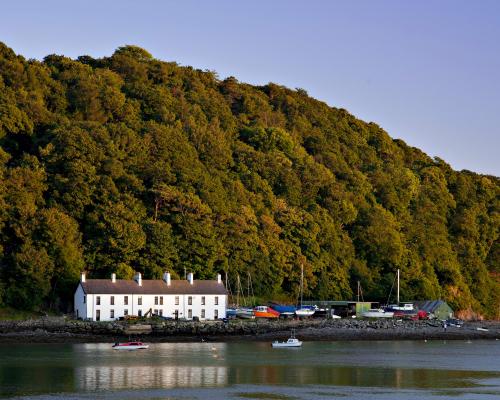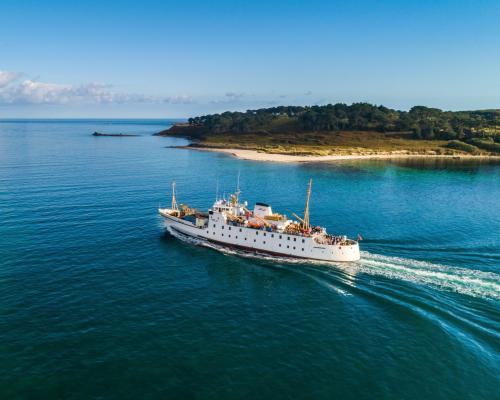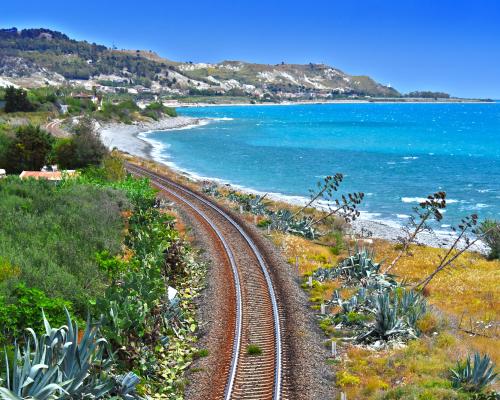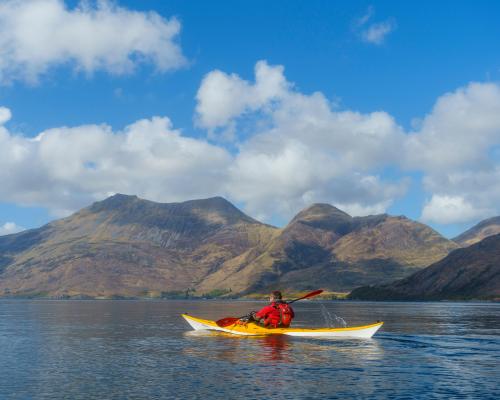
Tis the season to be beside the seaside – and to hype and critique coastal towns in surveys and rankings. I suppose lists of this year’s “in” and “out” resorts help tourists decide where to go; no point going to Skegness for Michelin-starred food, or to Salcombe for a laugh and cheap beer. Less obvious coastal towns provide more nuanced fare. Perhaps the most alluring spots are those where we don’t forget the sea. These three towns are routinely ranked last resorts or else ignored altogether, but they offer more than stuff to eat, drink, buy and post on socials – and are close to swimmable beaches.
Ayr, Ayrshire
A century ago, Clyde steamers and the Glasgow and South Western Railway took thousands of sunseekers from inland towns to the Ayrshire coast. They came to escape the smoke and noise of industry, breathe in the briny air, and admire the Isle of Arran and tiny Ailsa Craig – from afar or up close on an excursion. The bed and breakfasts on elegant Park Circus (a sweeping crescent lined with cherry trees that blossom red on one side and white on the other) and the Georgian villas on Eglinton Terrace evoke something of the golden days of yore.
It’s easy to imagine parasol-sporting ladies and tall-hatted gents strolling across the Low Green, a large field between the town centre and the beach. This open space – perfect for picnics, kite-flying and impromptu games – and the absence of any clutter on the prom make the seafront unusually peaceful. It’s as if Ayr has refused to become a traditional resort. No tat, no tack, not many tourists. There are places to play on swings and get an ice-cream or a pint, but lovers of amusement arcades and bucket-and-spade shops should probably stay away. On the short block beside the Low Green the buildings are mainly residential – including care homes, that standard fixture of coastal towns.
The beach is a golden sweep about two miles in length, with the old harbour at the north end. Wharves and quays once bustled all along the River Ayr. By the 14th century, this was Scotland’s principal west coast port. In the 18th century, more than 300 ships were moored every year, unloading American tobacco, French wine, Spanish salt, English earthenware and slate from Easdale in the Firth of Lorn. Walk south and you come to the ruins of Greenan Castle, a 16th-century clifftop tower. The sunsets over Arran are life-enhancing. I watched a woman of retirement age do her tai chi moves while keeping her eyes fixed on the island – spiritually separate from the dog-walkers and prom-striders.
Robert Burns was born near Ayr and baptised in the Auld Kirk. In Tam o’ Shanter he writes: “Auld Ayr, wham ne’er a town surpasses, / For honest men and bonny lasses”. A lively pub on the high street, which is set back a good mile from the beach, is named after the poem; it claims to be the oldest in Ayr, but so does the Black Bull on the opposite side of the river. The old bridge (or Auld Brig, if you prefer, which inspired another Burns poem) that takes you across is pedestrianised and a beauty. All the old pubs are enticing but I had my most enjoyable, peaceful beer and dram in the Twa Dugs – also named for a Burns poem. In Ayr’s Waterstones, I found a long-overlooked 1969 Booker-nominated novel by Gordon M Williams, From Scenes Like These, that provided a brutally realistic riposte to Burns-esque takes on rural Scotland. I read it in the boozers, the caffs, on benches.
People in Ayr will tell you the town has declined. They’ll tell you that in nine out of 10 seaside resorts. But this column gets me around, and I can vouch for the town’s general busyness and good looks. Sedate, somewhat stern, bereft of traditional fun stuff, it’s an ideal hideaway for those who want to do beach walks, read or write, and check into small, friendly guest houses.
Things to see and do: Rozelle House Museum, Robert Burns Birthplace Museum, Culzean Castle and Country Park
Bangor, Gwynedd
Bangor, the oldest city in Wales, came second from bottom in the Which? 2025 rankings and absolute bottom in 2024. Perhaps the latter partly anticipated the former. Casually saddle a place with derision and it takes a great effort to shake it off.
As the gateway to the island of Ynys Môn (Anglesey), a university town and former royal capital, Bangor doesn’t need star ratings or hip amenities. The city’s origins stretch back to the founding of a monastery in the early sixth century. A cathedral was later built on the site. For centuries, Bangor was the spiritual and ecclesiastical hub for Gwynedd – a kingdom until the English came a-conquering – but remained a small settlement. Nonetheless, during the first flush of Welsh tourism, at the turn of the 18th and 19th centuries, pleasure steamers from Liverpool brought visitors to see the big church and the wild waters of the Menai Strait.
The boom years came after 1826 with the completion of the Holyhead Road, linking London with Dublin – hitched to the recently created UK by the 1800 Acts of Union. The first major civilian state-funded road building project in Britain since the Roman era, the job was given to Thomas Telford. The road (much of it on the same route as today’s A5) swept through central Bangor, making the former big village a major staging post, and creating the longest high street in Wales. To replace the ferry-shuttles, Telford’s magnificent Menai Suspension Bridge opened in 1826. Two decades later, Robert Stephenson built a tubular bridge to carry the Chester-Holyhead railway across the straits. With communications much improved, Bangor became a proper little port, with shipbuilding, sail making, iron founding, smithing and timber yards, as well as slate yards.
Walk to the natural end of this high street – which turns residential – and you come to the shore, a pier and a large park between neo-Norman Penrhyn Castle and the sea. You don’t have an in-town beach, which might be why some of the raters have a low opinion of Bangor. But the Wales Coast Path and the railway line link Bangor with beaches at Llanfairfechan and Penmaenmawr, eight and 10 miles away respectively. In fact, this might be the best-connected seaside town in the UK, with Eryri national park (Snowdonia), Unesco-listed Caernarfon Castle and Criccieth and the Llŷn peninsula accessible by bus, and of course Anglesey on the doorstep.
Things to see and do: walk the Menai Suspension Bridge, kayaking off Caernarfon, Aber Falls Distillery
Millom, Cumbria
The Cumbrian coast is the most intriguing stretch of littoral in these islands. Backed by the towering, cloud-drawing fells of the national park, the shore is often beneath a blue dome. The towns along it are chapters in British social history. Whitehaven is like a Devon port town without the crowds. Workington is a fascinating ex-industrial town. Nethertown is a hidden hamlet in a spectacular setting.
Millom, at the southern tip of the old county of Cumberland, is a stop on the coast-hugging railway line – a superlative train ride – between Barrow-in-Furness and Sellafield. Its main connection to the nexuses of nuclear war and power are the Millomites who commute south and north for work. Millom once had industry; hematite ore (iron oxide) was found at Hodbarrow in 1856 and mined till 1968, the population swelling to 10,000. Much of the land was transformed into an RSPB nature reserve, centred on the north-west’s largest coastal lagoon; little, common and sandwich terns breed on the islands and you can see ringed plovers, redshanks, great crested grebes and oystercatchers around the wetlands.
Millom is tiny, but has none of the jams and crowds of the villages in the nearby Lakes. The Camra-rated Bear on the Square has real ales, good food and live music. The town has its own fell – Black Combe – and while only a 600-metre Marilyn, its isolation and proximity to the sea make it feel higher. The views from the summit are magnificent – with Blackpool Tower and Scafell Pike visible in clear weather.
The poet Norman Nicholson (1914-1987) was born in Millom and spent almost all his life here, shunning metropolitan literary circles and asserting that the much-maligned “provincial” has more in common with people of other times and lands and consequently “may be all the more aware of that which is enduring in life and society”. The titles of his books reflect the locale: Rock Face (1948); The Shadow of Black Combe (1978); Sea to the West (1981). St George’s church has a stained-glass window designed by Christine Boyce that was inspired by Nicholson’s writing. His house is being restored, while Millom as a whole is undergoing a major rebuild with heritage and health projects afoot as well as a 7.5-mile walking and cycling trail.
For a swim, head to Silecroft by train (one stop) or on foot (3.5 miles); Haverigg beach, though closer, often has pollution warnings.
Things to see and do: Millom Heritage and Arts Centre, Swinside Stone Circle
Further information: Visit Scotland, Visit Cumbria and Visit Wales







